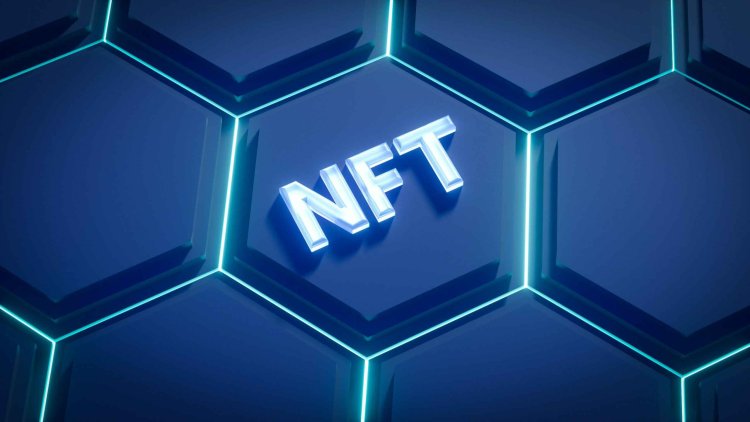NFT Marketplace Development: A Step-by-Step Guide
This guide walks you through the complete NFT marketplace development process, covering everything from the ideal tech stack to monetization models and 2025 trends that can give your platform a competitive edge.
Share this Post to earn Money ( Upto ₹100 per 1000 Views )

Want to build your own NFT marketplace but don’t know where to start? From choosing the right blockchain to integrating features like minting, wallet support, and auctions—developing an NFT marketplace demands a clear strategy, robust architecture, and future-ready technology.
This guide walks you through the complete NFT marketplace development process, covering everything from the ideal tech stack to monetization models and 2025 trends that can give your platform a competitive edge.
Why Invest in NFT Marketplace Development?
The NFT ecosystem is evolving beyond art and collectibles—into gaming, music, real estate, and enterprise applications. As demand rises, businesses are increasingly investing in NFT platform development to capture niche markets and create unique digital economies.
Whether you're planning an NFT marketplace for artists, brands, or gamers, the opportunity lies in owning the platform that connects creators with collectors.
NFT Marketplace Development Tech Stack
Choosing the right tools is crucial for performance, scalability, and security. Here's a recommended tech stack to build an NFT marketplace from scratch:
Blockchain Platforms (for smart contract deployment):
- Ethereum – Most popular, supports ERC-721/ERC-1155
- Polygon – Scalable and low fees
- Binance Smart Chain (BSC) – Cost-effective and fast
- Solana – High throughput and low cost
- Flow – Tailored for NFT marketplaces
Smart Contract Languages:
- Solidity (Ethereum/Polygon/BSC)
- Rust (Solana)
- Cadence (Flow)
Front-End Development:
- React.js or Vue.js
- HTML5, CSS3, Tailwind CSS for styling
- Next.js for SSR/SEO-friendly rendering
Back-End Development:
- Node.js, Express.js
- GraphQL for efficient data queries
Storage Solutions:
- IPFS (InterPlanetary File System) – Decentralized NFT asset storage
- Pinata or Filecoin – For pinning data on IPFS
Wallet Integration:
- MetaMask, WalletConnect, Coinbase Wallet
Database (for off-chain data):
- MongoDB, PostgreSQL
APIs & SDKs:
- Moralis, Alchemy, Infura – For blockchain communication
- OpenZeppelin – Smart contract templates
Key Features of a Successful NFT Marketplace
A feature-rich platform ensures a seamless experience for creators, collectors, and investors. Here’s what your NFT marketplace app should include:
User Registration & Profiles
- Simple onboarding via email or Web3 wallets
- Creator and collector roles
Wallet Integration
- Secure login and transactions using MetaMask or WalletConnect
- Multi-wallet support
NFT Minting
- One-click minting of NFTs (ERC-721/ERC-1155)
- Royalties’ setup and metadata management
Listings & Auctions
- Fixed price, timed auction, and Dutch auction options
- Bidding and reserve price functionality
NFT Search & Filters
- Category-wise browsing
- Filters by price, creator, popularity
Smart Contract Automation
- Transparent ownership and royalty distribution
- Escrow and automated settlement for sales
Admin Panel
- Manage listings, users, fees, disputes
- Analytics dashboard
Notifications & Alerts
- Real-time updates on bids, purchases, or NFT drops
Ratings & Reviews
- Build trust through community feedback
Multi-chain Support (Optional but trending)
- Allow trading across different blockchains via bridges
Security Measures for NFT Platforms
Security is non-negotiable in NFT marketplace development. Here’s what to implement:
- Smart Contract Audits – Avoid logic flaws or exploits
- Two-Factor Authentication (2FA) – For added user safety
- Data Encryption (TLS/SSL) – Secure asset transfers and user info
- DDoS Protection – Safeguard uptime and operations
- KYC/AML Compliance – If dealing with fiat or regulated NFTs
- Content Moderation Tools – To prevent fake or malicious listings
Monetization Models for NFT Marketplaces
Wondering how your platform will make money? Here are the most effective strategies:
- Commission on Sales: Fixed % on every NFT sale or resale
- Listing Fees: Charge creators to list NFTs or unlock premium features
- Minting Fees: Pay-per-mint or subscription-based minting access
- Featured Listings: Premium placement on homepage or search
- Affiliate Program: Incentivize influencers or promoters
2025 Trends in NFT Marketplace Development
To stay ahead, integrate these emerging 2025 trends:
- AI-Generated NFTs: Platforms allowing AI-based NFT creation (text-to-art, audio NFTs)
- Fractional NFTs: Own and trade fractions of high-value NFTs (especially in real estate or art)
- Dynamic NFTs (dNFTs): NFTs that change attributes based on user interaction or external triggers
- Cross-Chain Interoperability: Enable users to trade NFTs across Ethereum, Solana, BNB Chain, etc.
- Phygital NFTs: Combine physical goods with digital proof of ownership
- NFTs in Loyalty & Membership: Use NFTs for gated content, exclusive drops, or loyalty programs
Final Thoughts
NFT marketplaces are rapidly becoming digital ecosystems of value. Whether you're an entrepreneur, artist collective, or a large brand, building an NFT marketplace puts you in control of the user experience, monetization, and community.
To reduce time-to-market, you can also consider a white label NFT marketplace solution, but for full flexibility and innovation, developing from scratch offers unmatched potential.














